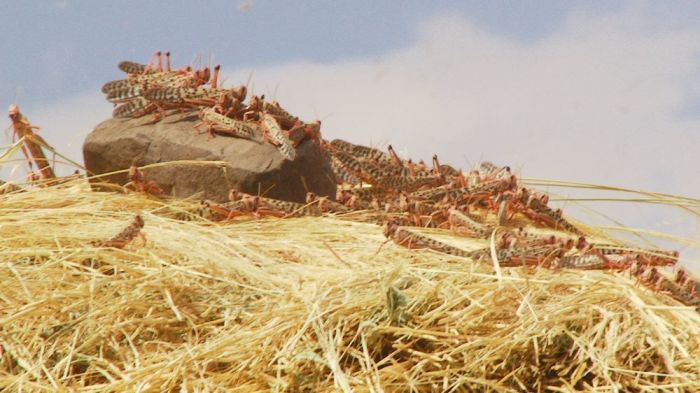New wave of locusts threatens millions in Africa, Middle East with food insecurity

The historic spread of desert locusts that has left tens of millions in danger of food insecurity in East Africa is expected to get 20 times worse as the United Nations predicts a dramatic increase in swarms throughout Africa and the Middle East in the coming months.
According to the U.N. Food and Agricultural Organization, the infestation of locusts in several countries in East Africa is causing an “unprecedented threat to food security and livelihoods” because the crop-devouring insects are interfering with the beginning of crop planting season.
Even though there have been ground and aerial efforts going on for months in countries like Somalia, Kenya and Ethiopia, the FAO reports that heavy rains from March “will allow the new swarms to mostly remain, mature and lay eggs while a few swarms could move from Kenya to Uganda, South Sudan and Ethiopia.”
“During May, the eggs will hatch into hopper bands that will form new swarms in late June and July, which coincides with the start of the harvest,” FAO warned in an April 8 update.
FAO estimates that the number of locusts "could increase another 20 times during the upcoming rainy season unless control activities are stepped up."
In Kenya, where the infestation is already said to be the largest in over 70 years, FAO reports that swarms appear to be increasing in size in some central and northern regions while some swarms are moving westward.
In Ethiopia, a large swarm has been reported in the south. In Uganda, several immature and maturing swarms appeared in the northeast on April 5.
On the Arabian Peninsula, spring breeding for the locusts has begun as the situation in Yemen “continues to deteriorate.”
“An immature swarm was seen on the coast at the Oman border and another one north of Aden, and adults are laying on the eastern plateau,” the FAO report stresses.
The FAO estimates that in the six East African countries worst affected or at risk of locusts — Ethiopia, Kenya, Somalia, South Sudan, Uganda and Tanzania — there are around 20 million people already “experiencing acute food insecurity.” A further 15 million people in Yemen also face acute food insecurity.
The U.N. also reports that there is “more hatching” as early instar bands form near the Persian Gulf. In Iran, the situation is becoming “increasingly worrisome” because spring breeding has begun and an increasing number of hopper bands are beginning to form along the southern coast.
The desert locusts consume most green vegetation and will eat anything from trees to crops as well as grass that is used to feed livestock.
Swarms consist of millions of locusts and can travel up to 90 miles per day.
“A swarm eats more than elephants in terms of quantity,” Joseph Kamara, regional director for humanitarian and emergency affairs in East Africa for the evangelical humanitarian aid charity World Vision, previously told The Christian Post. “And that's just one swarm. So if each locust lays about 900 eggs, you can imagine what that means.”
Kamara said that unusually wet weather from rare cyclones in the Arabian Peninsula and East Africa in December may be a factor in the crisis, as the swarms descended upon East Africa in December.
The outbreak has already damaged hundreds of thousands of hectares of cropland and pasture in Ethiopia, Kenya and Somalia.
“Once they land in your garden they do total destruction,” Ugandan farmer Yoweri Aboket told the Associated Press. “Some people will even tell you that the locusts are more destructive than the coronavirus. There are even some who don’t believe that the virus will reach here.”
The coronavirus pandemic has made it more difficult to fight the spread of locusts in Africa as many governments have instituted bans on public gatherings outside of homes and travel restrictions.
Officials told AP that restrictions at border crossings have made it more difficult to deliver pesticides. Additionally, disruptions to international cargo shipping have also caused delays.
"While lockdown is becoming a reality, people engaged in the fight against the upsurge are still allowed to conduct surveillance, and air and ground control operations,” FAO Resilience Team Leader for East Africa Cyril Ferrand said in a statement.
The FAO is encouraging countries to use the program eLocust3 to transmit data in real-time to national locust centers and the Desert Locust Information Service.
"We need to rely on a network of partners in the field in order to collect vital information because we cannot go everywhere due to COVID-19," Ferrand said.
Follow Samuel Smith on Twitter: @IamSamSmith
or Facebook: SamuelSmithCP



























